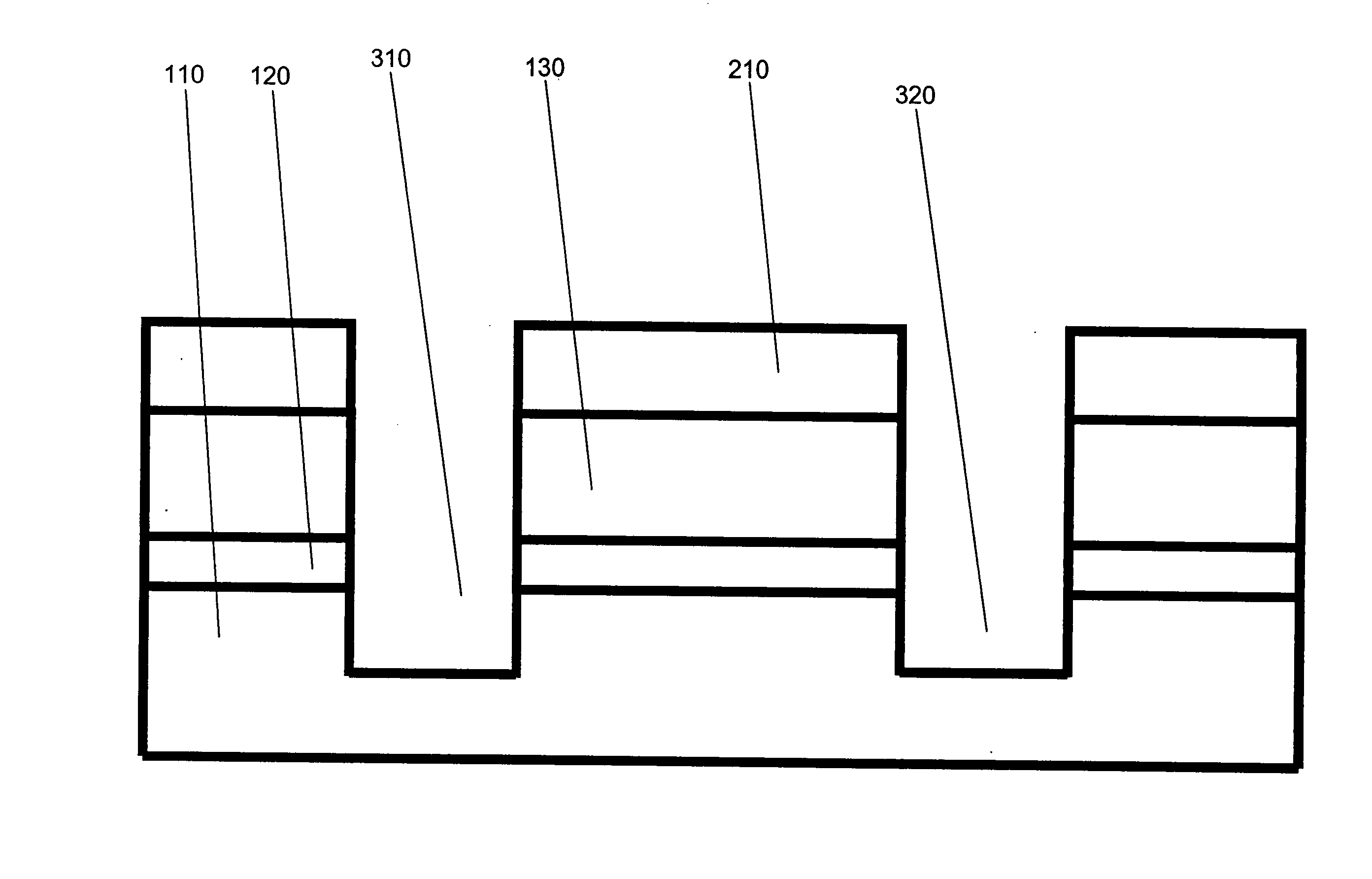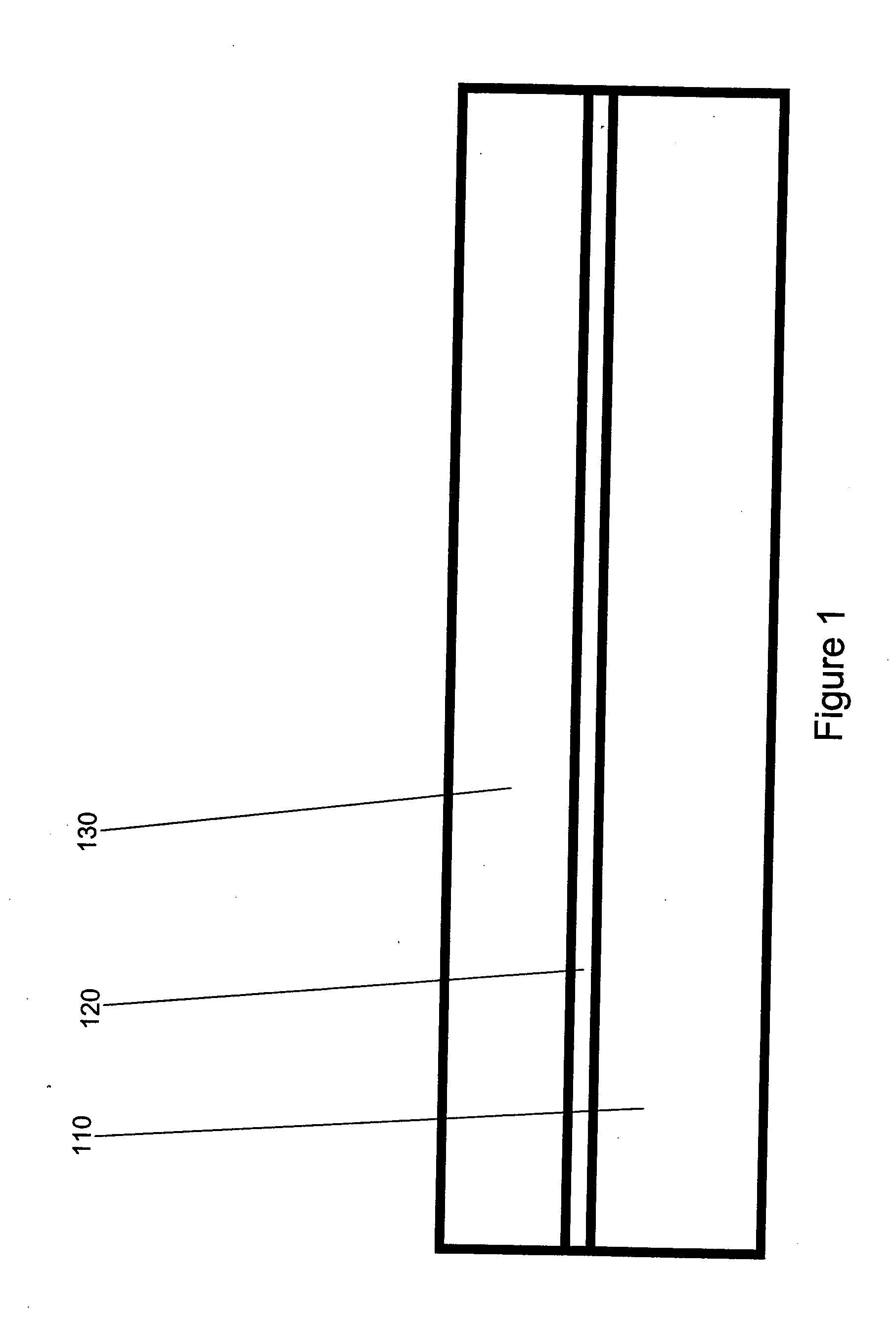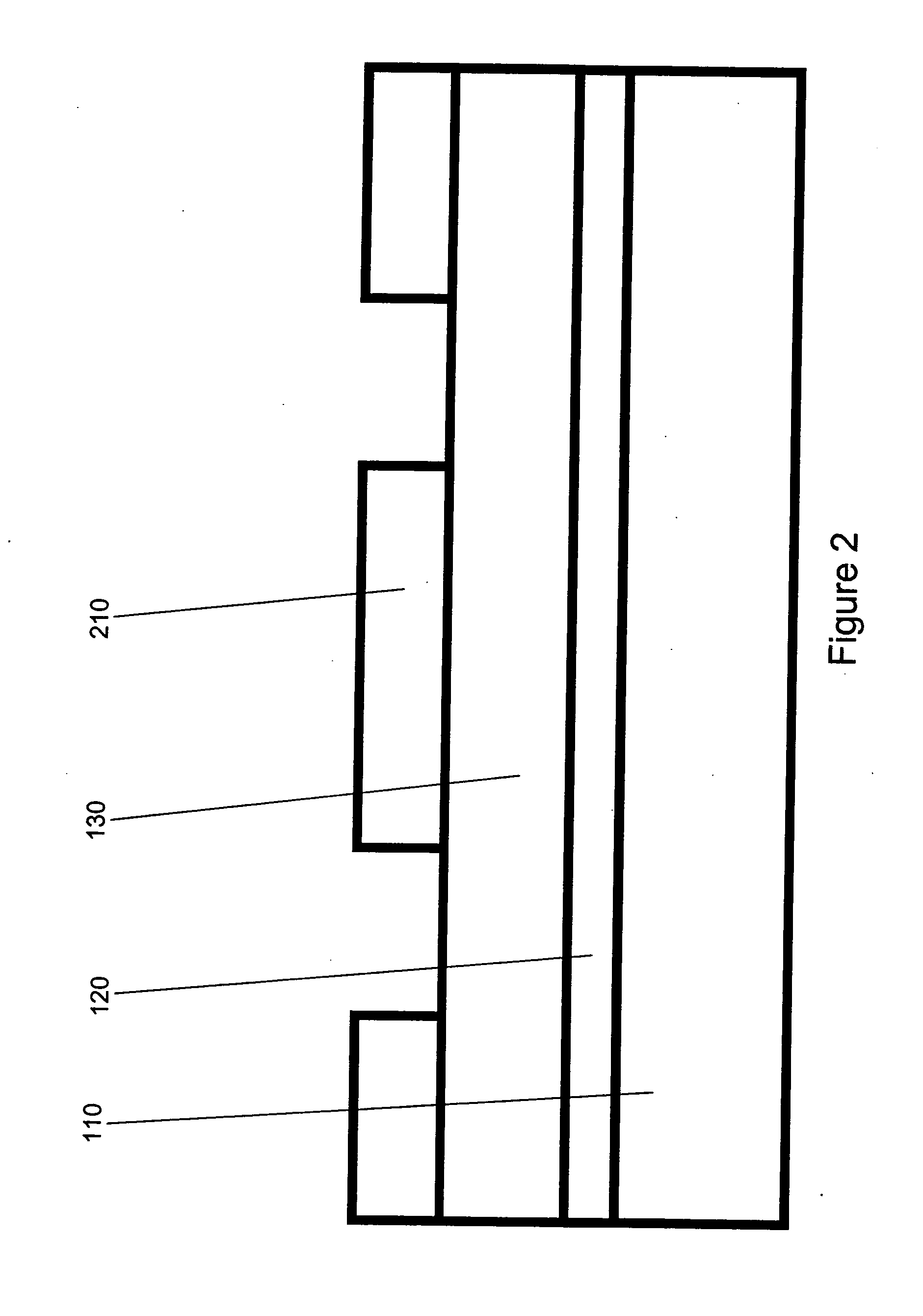High performance strained CMOS devices
a technology of cmos and high-performance, applied in the field of semiconductor devices, can solve the problems of p-fets, deterioration of electron mobility, and significant increase in hole mobility
- Summary
- Abstract
- Description
- Claims
- Application Information
AI Technical Summary
Benefits of technology
Problems solved by technology
Method used
Image
Examples
Embodiment Construction
[0023] The invention employs a silicon nitride (Si3N4) pull-back process in combination with a mask used to prevent the Si3N4 pull-back from being executed in the longitudinal components of some or all pFET devices. The resulting semiconductor structure has overhang structures (referred to herein as overhang, SiO2 overhang, and STI overhang) present for nFET devices in the directions of and transverse to current flow. To enhance performance due to compressive stresses, no silicon dioxide (SiO2) overhang is present in the direction parallel to the direction of current flow for pFET devices.
[0024] However, the structure has SiO2 overhangs in the direction transverse to current flow for pFET devices to avoid performance degradation from compressive stresses. The overhang structures prevent oxidation by blocking access to underlying Si. Without an overhang, Si at the vertical Si—SiO2 interface adjacent to the shallow trench isolation would be susceptible to oxidation and attendant volu...
PUM
 Login to View More
Login to View More Abstract
Description
Claims
Application Information
 Login to View More
Login to View More - R&D
- Intellectual Property
- Life Sciences
- Materials
- Tech Scout
- Unparalleled Data Quality
- Higher Quality Content
- 60% Fewer Hallucinations
Browse by: Latest US Patents, China's latest patents, Technical Efficacy Thesaurus, Application Domain, Technology Topic, Popular Technical Reports.
© 2025 PatSnap. All rights reserved.Legal|Privacy policy|Modern Slavery Act Transparency Statement|Sitemap|About US| Contact US: help@patsnap.com



